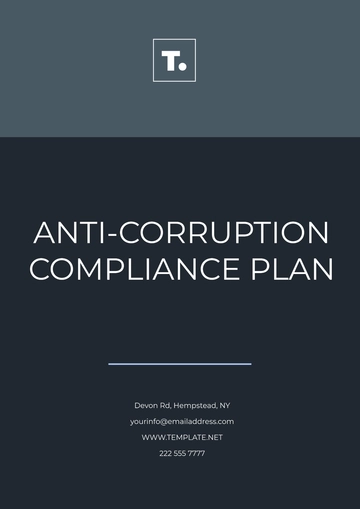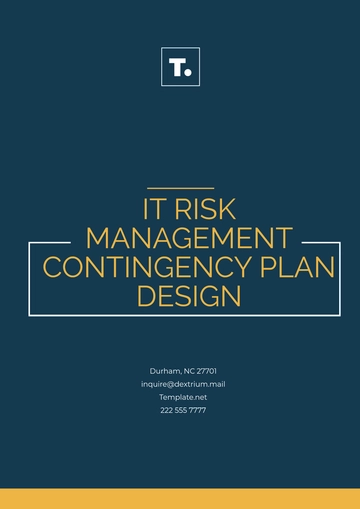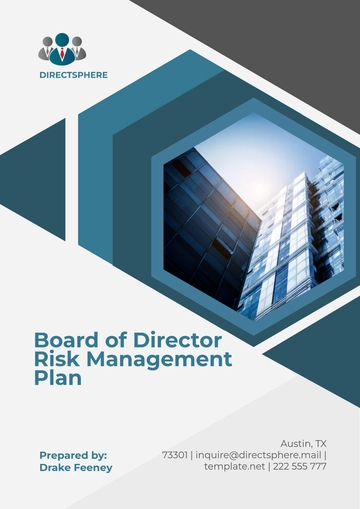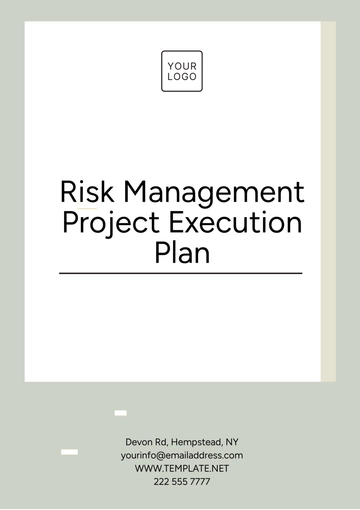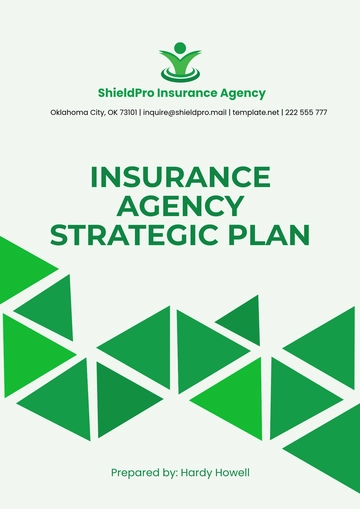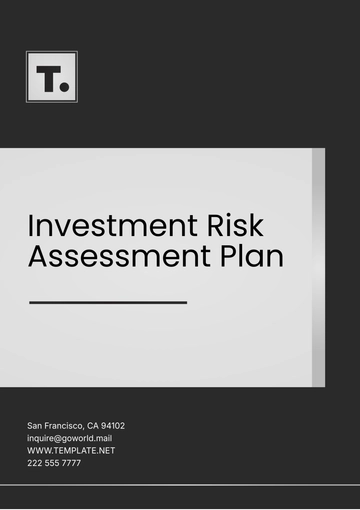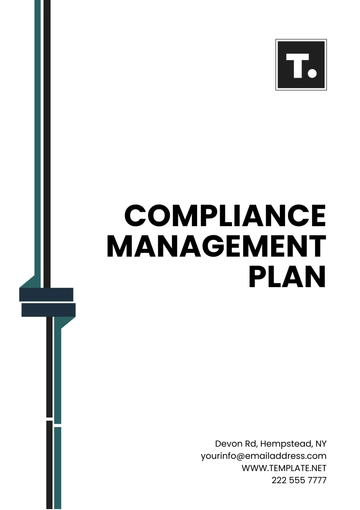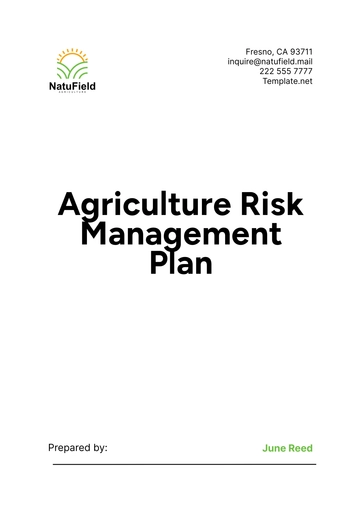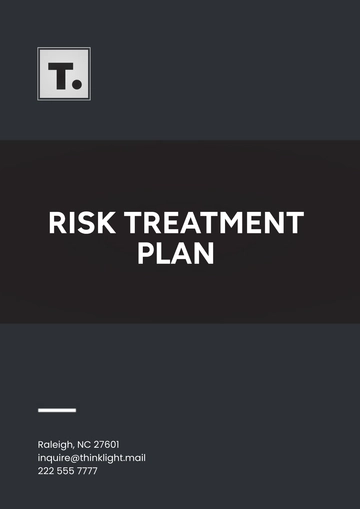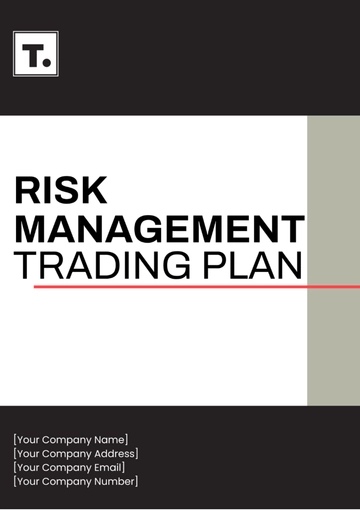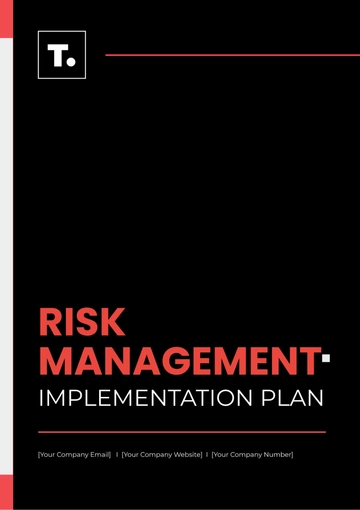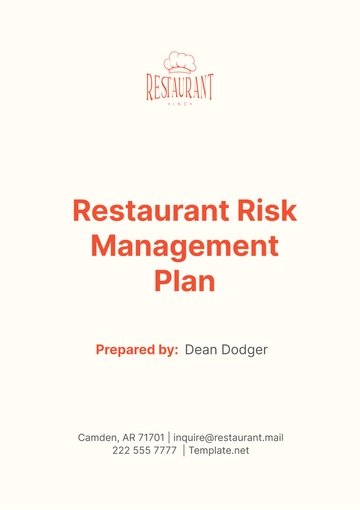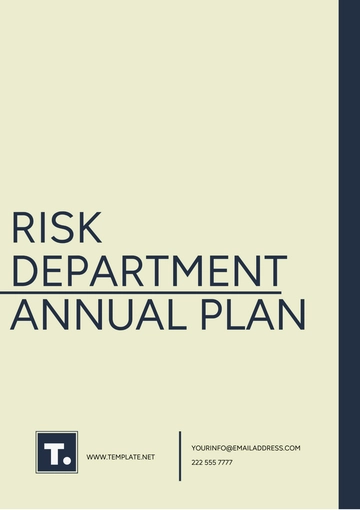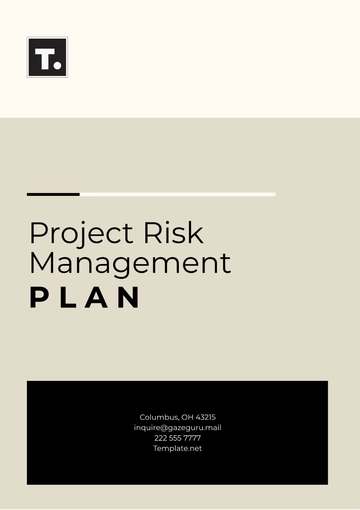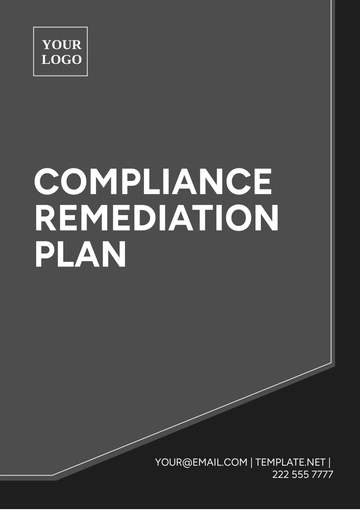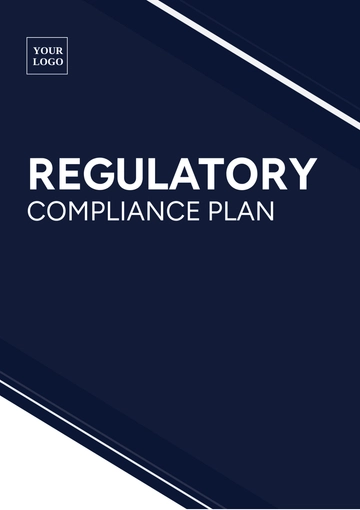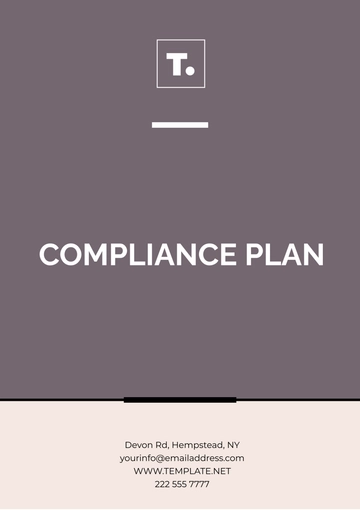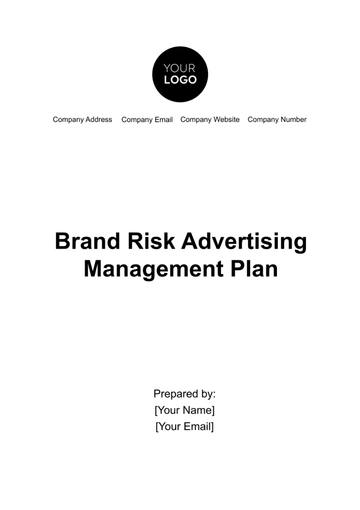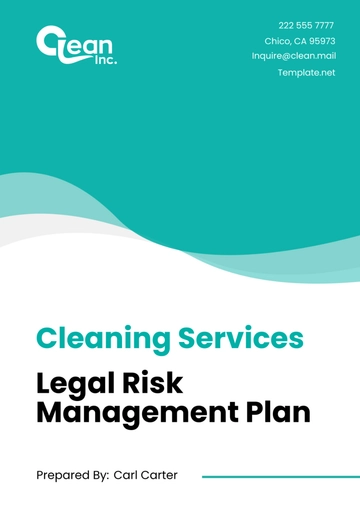Free Startup SWOT Analysis and Risk Management Plan

I. Executive Summary
In this comprehensive startup SWOT Analysis and Risk Management Plan, we present a strategic roadmap for navigating the complexities of launching and sustaining a successful venture. By conducting a thorough analysis of our startup's internal capabilities and external environment, we aim to capitalize on opportunities, mitigate risks, and achieve our business objectives effectively.
II. Description of the Startup
Our startup, named [Your Company Name], is on a mission to disrupt the e-commerce landscape by bridging the gap between artisans and discerning consumers who value authenticity and craftsmanship. Our innovative online platform serves as a marketplace where artisans from around the world can showcase their unique handmade products directly to customers seeking ethically sourced goods.
Driven by a commitment to sustainability and fair trade practices, our startup empowers artisans to reach a global audience while enabling consumers to discover one-of-a-kind treasures with meaningful stories behind them. Our platform not only offers a curated selection of high-quality handmade items but also fosters a sense of connection and cultural appreciation among buyers and sellers.
With a diverse team of passionate individuals dedicated to our shared vision, our startup seeks to redefine the way people shop online by prioritizing transparency, community, and social impact. Through our platform, we aim to create opportunities for artisans to thrive economically while offering customers a more meaningful shopping experience that aligns with their values and aspirations.
III. SWOT Analysis
This process involves analyzing the Strengths, Weaknesses, Opportunities and Threats of our Startup. The gathered data will be represented in the following SWOT table:
Strengths | Weaknesses |
|---|---|
Strong brand identity | Limited funding |
Innovative technology | Reliance on third-party suppliers |
Passionate team | Lack of brand awareness |
Opportunities | Threats |
|---|---|
Growing demand for sustainable products | Intense competition |
Expanding market reach through social media | Economic downturns impacting consumer spending |
Potential partnerships with ethical brands | Supply chain disruptions |
IV. Evaluating SWOT Analysis
Evaluating the SWOT analysis involves delving deeper into the findings to extract actionable insights. It requires a critical examination of each element to understand its significance and relevance to the startup's objectives. This process goes beyond merely identifying strengths, weaknesses, opportunities, and threats; it involves analyzing the interplay between these factors and how they shape the startup's competitive position.
By evaluating the SWOT analysis, we can uncover underlying trends, patterns, and relationships that may not be immediately apparent. This deeper understanding allows us to identify key strategic priorities and develop targeted initiatives to capitalize on our strengths, mitigate our weaknesses, seize opportunities, and mitigate threats effectively.
Moreover, evaluating the SWOT analysis enables us to assess the dynamic nature of our business environment continually. Market conditions, consumer preferences, technological advancements, and competitive landscapes are constantly evolving, necessitating ongoing evaluation and adjustment of our strategic approach. By regularly revisiting and reassessing the SWOT analysis, we can adapt our strategies to changing circumstances and maintain our competitive edge.
In essence, evaluating the SWOT analysis is not just a one-time exercise but an ongoing process that informs strategic decision-making, drives innovation, and ensures the alignment of our actions with our overarching goals and objectives.
V. Risk Management
At its core, risk management involves a proactive and holistic approach to identifying potential risks across all aspects of the startup's operations. This includes financial risks, operational risks, market risks, strategic risks, compliance risks, and external risks beyond the organization's control. By systematically identifying and assessing these risks, we can develop a clear understanding of their potential impact and likelihood of occurrence.
Once risks have been identified and analyzed, the next step is to prioritize them based on their severity and likelihood. This involves determining which risks pose the greatest threat to the startup's objectives and require immediate attention. By prioritizing risks, we can allocate resources effectively and focus our efforts on addressing the most critical vulnerabilities.
With prioritized risks in hand, we, as a startup, can then develop and implement response strategies to mitigate or manage them effectively. These strategies may include risk avoidance, risk reduction, risk transfer, or risk acceptance, depending on the nature of the risk and the startup's risk appetite. By proactively addressing risks, we can minimize their impact and increase the likelihood of achieving our objectives.
VI. Risk Identification
Risk identification is the first step in the risk management process and involves identifying potential threats and opportunities that could affect our startup's ability to achieve its objectives. This process includes analyzing various aspects of our business, such as financial, operational, strategic, regulatory, and market factors, to uncover potential risks.
We will employ various techniques to identify risks, including brainstorming sessions, SWOT analysis, scenario analysis, historical data review, and consultation with stakeholders. By engaging stakeholders at all levels of the organization, we can gather diverse perspectives and insights to ensure comprehensive risk identification.
VII. Risk Analysis
Risk analysis involves assessing the likelihood and potential impact of identified risks on our startup's objectives. This analysis allows us to prioritize risks based on their severity and develop appropriate response strategies. We will use qualitative and quantitative methods to analyze risks, including probability and impact assessments, risk matrices, and sensitivity analysis.
During risk analysis, we will consider factors such as the probability of occurrence, potential financial and operational impacts, regulatory implications, and dependencies between risks. By conducting a thorough risk analysis, we can gain a deeper understanding of our risk exposure and develop targeted mitigation strategies to minimize their impact.
VIII. Risk Prioritization
Risk prioritization is a critical step in our risk management process, ensuring that we allocate our resources effectively to address the most significant threats to our startup's success. By ranking risks based on their likelihood and impact, we can focus our attention on managing those with the highest potential to affect our objectives.
Example Risks:
Risk Description | Likelihood | Impact | Priority | Response Strategy |
|---|---|---|---|---|
Economic downturn impacting consumer spending | High | High | High | Diversify product offerings, focus on cost efficiency |
Supply chain disruptions | Medium | High | Medium | Develop alternative suppliers, maintain buffer inventory |
Regulatory changes affecting business operations | Medium | Medium | Medium | Stay informed about regulatory developments, adapt policies and procedures |
Cybersecurity breaches | Low | High | Medium | Invest in robust cybersecurity measures, conduct regular audits |
Key personnel turnover | Low | Medium | Low | Implement succession planning, cross-train employees |
In this table, risks are assessed based on their likelihood of occurrence, potential impact on our startup, and priority for mitigation. By addressing high-priority risks with a proactive response strategy, such as diversifying product offerings or investing in cybersecurity measures, we can minimize their impact and safeguard our startup's success.
IX. Risk Response Strategies
Developing response strategies involves identifying appropriate actions to mitigate or exploit identified risks. Here are some examples:
Risk Avoidance: If a particular risk poses a significant threat with limited potential benefits, we may choose to avoid it altogether. For example, if entering a new market presents substantial regulatory hurdles and uncertain demand, we may opt to focus on existing markets until conditions become more favorable.
Risk Transfer: In cases where we cannot avoid a risk entirely, we may transfer the responsibility for managing it to a third party. This could involve purchasing insurance to mitigate financial losses resulting from unforeseen events such as natural disasters or supplier defaults.
Risk Reduction: Implementing measures to reduce the likelihood or impact of identified risks is crucial for enhancing our startup's resilience. For instance, investing in redundancy within our supply chain to minimize the disruption caused by a single supplier's failure can help mitigate operational risks.
Risk Sharing: Collaborating with strategic partners or stakeholders can help spread the impact of certain risks. By sharing resources, knowledge, and expertise, we can collectively address common challenges and capitalize on shared opportunities more effectively.
Contingency Planning: Developing contingency plans enables us to respond swiftly and effectively to unforeseen events or emergencies. For example, having backup suppliers lined up in case of supply chain disruptions ensures continuity of operations and minimizes the impact on our customers.
X. Conclusion
In conclusion, this SWOT Analysis and Risk Management Plan provides a robust framework for navigating the complexities of our startup's environment. By leveraging our strengths, addressing weaknesses, capitalizing on opportunities, and managing risks proactively, we can position ourselves for long-term success and sustainability in the competitive marketplace. With comprehensive response strategies in place, we are well-equipped to adapt to changing circumstances, mitigate potential threats, and seize emerging opportunities as we strive to achieve our business objectives.
- 100% Customizable, free editor
- Access 1 Million+ Templates, photo’s & graphics
- Download or share as a template
- Click and replace photos, graphics, text, backgrounds
- Resize, crop, AI write & more
- Access advanced editor
Empower your startup with Template.net's dynamic SWOT Analysis and Risk Management Template. Editable and customizable, it's tailored to your unique needs. Crafted for ease, it's accessible through our online AI Editor Tool, ensuring seamless collaboration. Elevate your strategy, mitigate risks, and thrive in today's competitive landscape with confidence.
You may also like
- Finance Plan
- Construction Plan
- Sales Plan
- Development Plan
- Career Plan
- Budget Plan
- HR Plan
- Education Plan
- Transition Plan
- Work Plan
- Training Plan
- Communication Plan
- Operation Plan
- Health And Safety Plan
- Strategy Plan
- Professional Development Plan
- Advertising Plan
- Risk Management Plan
- Restaurant Plan
- School Plan
- Nursing Home Patient Care Plan
- Nursing Care Plan
- Plan Event
- Startup Plan
- Social Media Plan
- Staffing Plan
- Annual Plan
- Content Plan
- Payment Plan
- Implementation Plan
- Hotel Plan
- Workout Plan
- Accounting Plan
- Campaign Plan
- Essay Plan
- 30 60 90 Day Plan
- Research Plan
- Recruitment Plan
- 90 Day Plan
- Quarterly Plan
- Emergency Plan
- 5 Year Plan
- Gym Plan
- Personal Plan
- IT and Software Plan
- Treatment Plan
- Real Estate Plan
- Law Firm Plan
- Healthcare Plan
- Improvement Plan
- Media Plan
- 5 Year Business Plan
- Learning Plan
- Marketing Campaign Plan
- Travel Agency Plan
- Cleaning Services Plan
- Interior Design Plan
- Performance Plan
- PR Plan
- Birth Plan
- Life Plan
- SEO Plan
- Disaster Recovery Plan
- Continuity Plan
- Launch Plan
- Legal Plan
- Behavior Plan
- Performance Improvement Plan
- Salon Plan
- Security Plan
- Security Management Plan
- Employee Development Plan
- Quality Plan
- Service Improvement Plan
- Growth Plan
- Incident Response Plan
- Basketball Plan
- Emergency Action Plan
- Product Launch Plan
- Spa Plan
- Employee Training Plan
- Data Analysis Plan
- Employee Action Plan
- Territory Plan
- Audit Plan
- Classroom Plan
- Activity Plan
- Parenting Plan
- Care Plan
- Project Execution Plan
- Exercise Plan
- Internship Plan
- Software Development Plan
- Continuous Improvement Plan
- Leave Plan
- 90 Day Sales Plan
- Advertising Agency Plan
- Employee Transition Plan
- Smart Action Plan
- Workplace Safety Plan
- Behavior Change Plan
- Contingency Plan
- Continuity of Operations Plan
- Health Plan
- Quality Control Plan
- Self Plan
- Sports Development Plan
- Change Management Plan
- Ecommerce Plan
- Personal Financial Plan
- Process Improvement Plan
- 30-60-90 Day Sales Plan
- Crisis Management Plan
- Engagement Plan
- Execution Plan
- Pandemic Plan
- Quality Assurance Plan
- Service Continuity Plan
- Agile Project Plan
- Fundraising Plan
- Job Transition Plan
- Asset Maintenance Plan
- Maintenance Plan
- Software Test Plan
- Staff Training and Development Plan
- 3 Year Plan
- Brand Activation Plan
- Release Plan
- Resource Plan
- Risk Mitigation Plan
- Teacher Plan
- 30 60 90 Day Plan for New Manager
- Food Safety Plan
- Food Truck Plan
- Hiring Plan
- Quality Management Plan
- Wellness Plan
- Behavior Intervention Plan
- Bonus Plan
- Investment Plan
- Maternity Leave Plan
- Pandemic Response Plan
- Succession Planning
- Coaching Plan
- Configuration Management Plan
- Remote Work Plan
- Self Care Plan
- Teaching Plan
- 100-Day Plan
- HACCP Plan
- Student Plan
- Sustainability Plan
- 30 60 90 Day Plan for Interview
- Access Plan
- Site Specific Safety Plan
